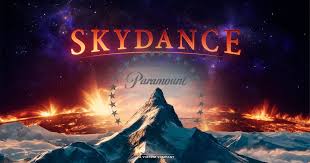The long-anticipated $8 billion merger between Skydance Media and Paramount Global has officially closed, ushering in a new era for the entertainment industry. With this deal, David Ellison, the 41-year-old founder and CEO of Skydance, is poised to take control of one of Hollywood’s most iconic studios, in a bid to revitalize a legacy media company amid changing viewer behaviors and streaming wars.
This merger not only solidifies Skydance’s place as a dominant player in global media but also marks a significant shift in how legacy companies adapt to the demands of digital transformation.
The Skydance-Paramount Merger: What Just Happened?
The merger between Skydance and Paramount has been brewing for months. On August 7, 2025, the deal was finalized with Skydance officially taking control of the newly merged entity. The combined company is now called Paramount Skydance, with David Ellison as Chairman and CEO and former NBCUniversal executive Jeff Shell stepping in as President.
The deal valued Paramount at $8 billion and includes an infusion of capital aimed at clearing the company's substantial debt load. Skydance and its financial backers, RedBird Capital Partners and KKR, are injecting about $1.5 billion in new equity to stabilize the business. Another $4.5 billion will go toward acquiring shares from non-voting shareholders, creating a more streamlined and focused ownership structure.
The controlling Redstone family, through National Amusements Inc. (NAI), will exit the company, closing a chapter that dates back decades to the founding of Viacom by Sumner Redstone.
Who Is David Ellison, The Man Behind Skydance?
David Ellison is not a typical media mogul. The son of Oracle co-founder Larry Ellison, David made his own name in the entertainment world by founding Skydance in 2010. Initially seen as a minor player, Skydance steadily grew into a formidable production studio known for major hits like the Mission: Impossible series, Top Gun: Maverick, and several big-budget streaming projects with Amazon and Apple.
Ellison’s approach has always been pragmatic. While many studios chased streaming growth at any cost, Skydance remained financially disciplined and focused on quality storytelling with commercial appeal. The Skydance Paramount merger allows Ellison to bring this nimble, entrepreneurial mindset to a much larger operation that has struggled in recent years.
In a statement, Ellison said the deal is about "unlocking value" and "reinvigorating a storied brand" by blending Skydance’s innovation with Paramount’s legacy. With a clear vision and strong financial backing, Ellison is expected to steer the company through Hollywood's ongoing transformation.
What Changes Can We Expect in the New Paramount Skydance?
The Skydance Paramount merger is not just symbolic; it is expected to bring tangible changes across several fronts:
1. Content Strategy Overhaul
The combined company is expected to place greater emphasis on franchises and global tentpole films. Skydance’s experience in action blockbusters and animated content (via partnerships with John Lasseter and former Pixar talent) could help reinvigorate Paramount’s pipeline.
2. Streaming and Digital Focus
Paramount+ has long lagged behind Netflix, Disney+, and Max in terms of subscribers and profitability. Under the new leadership, expect a sharper focus on profitability rather than subscriber growth. Skydance’s tech-savvy approach could optimize the platform’s performance and content curation.
3. Cost Discipline and Debt Reduction
With legacy media firms facing high costs and low margins, the $1.5 billion equity injection from Skydance’s investors will go a long way in deleveraging Paramount’s balance sheet. Ellison and Shell are likely to streamline operations, cut redundant divisions, and focus on profitable verticals.
4. Organizational Restructuring
David Ellison’s role as CEO, combined with Jeff Shell’s operational expertise, signals a leadership overhaul. The goal is to create a leaner, faster, and more adaptive company that can respond to market shifts without the bureaucratic drag of traditional media conglomerates.
Why This Deal Matters for the Broader Industry
The Skydance Paramount merger is more than just a corporate reshuffling — it’s a reflection of how legacy media companies must evolve or perish. Traditional broadcast and cable models are in decline, theatrical releases are still recovering post-COVID, and streaming profitability remains elusive.
Paramount has, for years, been seen as a potential acquisition target, with its undervalued stock and aging assets. But under the Skydance umbrella, it has a chance to reinvent itself. Ellison’s goal appears to be a hybrid studio model that leverages both legacy IP and new-age digital agility.
This merger also sets a precedent: It shows that family-owned media empires like NAI can be succeeded by entrepreneurial leaders with a clear vision and access to patient capital. It could pave the way for similar takeovers in the near future as the line between tech, private equity, and media continues to blur.
Investor and Market Reactions
Wall Street reacted positively to the merger closure. Paramount’s stock saw a slight uptick following the news, driven by expectations of cost savings and better capital allocation. Analysts are now closely watching Ellison and Shell’s first 100 days for signals of execution strategy and potential spin-offs or asset sales.
RedBird and KKR’s involvement adds further legitimacy. Both firms have deep experience in media investments and are likely to support future M&A activities if strategic targets emerge.
Conclusion: Hollywood’s New Power Center
With the Skydance Paramount merger now official, all eyes will be on how David Ellison reshapes the entertainment giant. The deal marks a generational shift in leadership and a rare opportunity to reboot a historic brand with modern tools and fresh capital.
In an industry where innovation often collides with tradition, the success or failure of Paramount Skydance could become a case study in corporate transformation. And with Ellison at the helm, Hollywood may be witnessing the rise of its next great visionary.
Read More






 Sunday, 30-11-25
Sunday, 30-11-25







